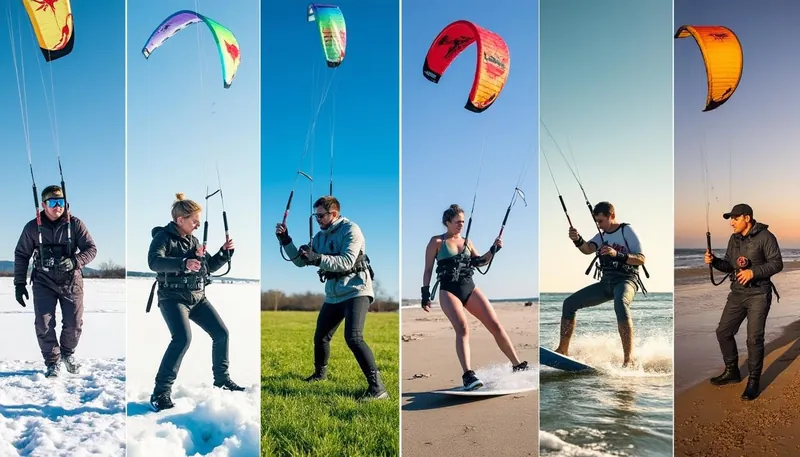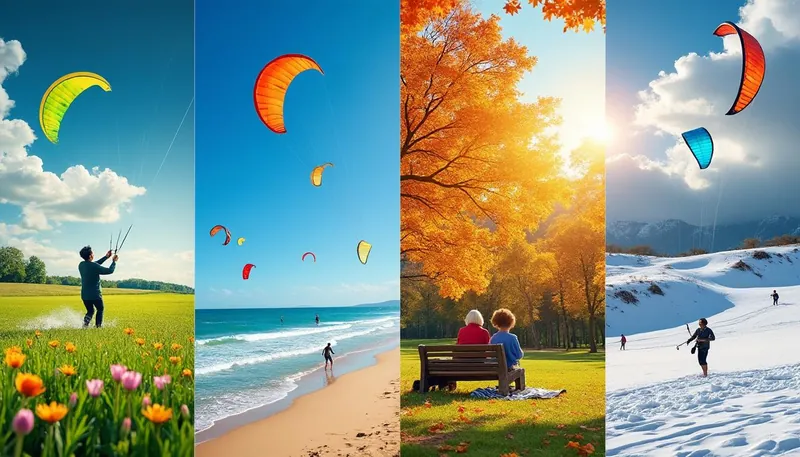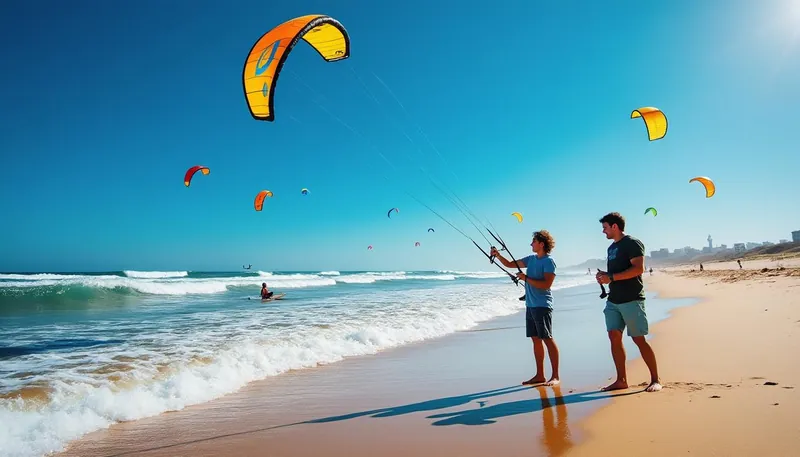Traction kiting has rapidly gained popularity as one of the most exhilarating outdoor activities. As enthusiasts strap themselves into their harnesses and prepare their kites, a common question arises: can this thrilling activity be enjoyed all year long? While the answer might seem straightforward, the reality is that it is influenced by a variety of factors, such as geography, weather conditions, and the type of traction kiting being undertaken. Let’s explore the different aspects that determine the feasibility of practicing traction kiting throughout the year.
In essence, traction kiting encompasses various disciplines, including land, snow, and water kiting, which means that the conditions and environments required may vary quite a bit. For instance, kiting on snow and ice is primarily a winter activity while water kiting is best suited for warmer months. Thus, your experience may differ depending on where you live and how the seasons impact the suitable kiting conditions.
Understanding the Different Types of Traction Kiting
When discussing traction kiting, it’s crucial to recognize the various forms this engaging sport can take. Each type possesses unique requirements for optimal weather and terrain conditions.
Land Kiting
Land kiting, often known simply as traction kiting, typically takes place on flat terrain such as beaches, fields, or even specialized parks designed for kiting. Engaging in land kiting is feasible throughout much of the year, provided the wind conditions are prime for flying the kite. The ideal wind speed usually falls between 10 to 25 knots, offering enough power to maneuver the kite without risking control.
- Optimal wind conditions 🪁
- Flat, open terrain 🌾
- Year-round practice possible with proper gear 🏋️♂️
For example, if you reside in coastal areas with consistent winds, you might be able to enjoy year-round land kiting. Conversely, those situated in regions with less wind or heavy urban development may find their opportunities limited.
Snow Kiting
Snow kiting opens up a world of winter adventure for those who are keen on gliding across well-frozen lakes and snowy fields. This form of traction kiting demands not just the right kite but also essential winter gear for safety and warmth. Snow kiting usually flourishes between late fall and early spring, depending entirely on the temperatures.
- Requires snowy environments ❄️
- Wind conditions less than perfect may impair enjoyment 🌪️
- Involves specialized gear (skis or snowboard) 🏂
Many snow kite enthusiasts gather in annual events at places known for heavy snowfall, offering opportunities to share techniques and tips with fellow riders. However, for those living in regions with unpredictable winter patterns, this might limit your ability to kite as frequently.
Water Kiting
Water kiting, or kiteboarding, is probably the most famous aspect of traction kiting, and it thrives especially in warm climates. With the right equipment, you can enjoy this activity from late spring to early fall, depending on the water temperature. Locations with consistent winds, such as river deltas or coastal areas, are by far the most suitable for kiteboarding.
- Best performed in warm weather ☀️
- Ideal sea and wind conditions can vary greatly 🌊
- Safety gear required (life vest, foot protection) 🦺
Popular destinations, such as the beaches of Tarifa in Spain or Cape Town in South Africa, are renowned for their reliable wind patterns, making them beloved spots among kiteboarders. While you can water kite at various locations, the best season may vary depending on where you find yourself.

The Impact of Geography on Traction Kiting Seasons
Your geographical location will significantly influence the opportunities available for traction kiting. For instance, enthusiasts living near the North Pole will face different seasonal conditions compared to those residing in tropical areas. Here’s a closer look at how geography plays into the dynamics of traction kiting.
Coastal Regions
Coastal areas are generally seen as the holy grail for traction kiting, particularly water kiting. The combination of endless stretches of beach and predictable wind patterns makes these regions perfect for those looking to enjoy kiting year-round. Locations like Hawaii and Baja California are immensely popular for water kiting and have ample access to both flat water and waves.
- Consistent kiting conditions year-round 🌅
- Access to sailing and kiting schools 🏄♂️
- Strong community support and events 📅
Inland Areas
Inland areas can be a bit tricky, especially since the weather may not cooperate as often as one would like. While some have succeeded in harnessing the power of wind at local parks or lakes, most kiting activities are sensitive to rapid temperature changes and wind shifts. In some cases, these regions may only have specific window-like summer months when conditions become favorable.
- Increased reliance on forecasts 🌬️
- Typically limited seasons for snow kiting ❄️
- Potential for localized wind patterns 🌪️
Mountainous Regions
Mountainous areas can be a double-edged sword for traction kiting. While the scenic backdrop is incredible, changes in elevation can significantly affect wind patterns. That said, snow kiting in these regions may provide some of the best experiences, especially with a solid understanding of terrain and conditions. However, the unpredictable weather may restrict opportunities throughout the year.
- Possible winter and summer sports 🚠
- Challenging terrain for beginners ⛰️
- Importance of safety awareness ⚠️
Weather Patterns and Their Implications on Traction Kiting
Your favorite pastime can easily be dictated by yearly weather patterns. Recognizing these natural fluctuations is essential for any traction kite practitioner looking to utilize seasonal changes to their advantage.
Wind Patterns
Understanding local wind patterns can help you navigate the seasons more conveniently. For instance, coastal areas tend to benefit from more consistent sea breezes during specific months. Familiarizing yourself with the different kiting conditions is key.
- Crossover between seasons can provide ideal days 🔄
- Transitioning winds can lead to unexpected opportunities 🌪️
- Wind forecasting tools are a must-have ⏳
Temperature and Season
The significance of temperature cannot be overstated. Warmer temperatures lead to a flourishing water kiting season while colder conditions favor snow kiting. Certain techniques and adjustments in gear will also depend heavily on the expected temperatures. Ultimately, your choice of type may depend on your tolerance to cold.
- Gear selection should match conditions 🎒
- Cold-weather gear essential for snow kiting 🧊
- Monitoring local forecasts is crucial 🌡️
| Type of Traction Kiting | Best Season | Geographic Location |
|---|---|---|
| Land Kiting | Year-round (weather permitting) | Coastal and inland areas |
| Snow Kiting | Late fall to early spring | Areas with heavy snowfall |
| Water Kiting | Late spring to early fall | Coastal regions with regular winds |
Preparing for Traction Kiting All Year Round
The prospect of practicing traction kiting year-round hinges not only on seasonal and environmental conditions but also on your personal preparation. Optimizing your skills and equipment will ensure a more enjoyable and safer experience when the right opportunities arise.
Equipment Considerations
Investing in quality gear is a must. Depending on the type of traction kiting you pursue, your equipment will vary. Options like Ozone, Cabrinha, Slingshot, and Naish offer an impressive range of kites tailored to specific conditions, such as wind strength and environmental features.
- Choosing the right kite size for conditions 🎈
- Using protective gear to enhance safety 🛡️
- Regular gear maintenance to extend lifespan 🔧
Skill Development
Building your skills is essential for a successful year-round experience. Techniques can differ between land, snow, and water kiting, so practicing various aspects of maneuvering your kite across different terrains can improve your adaptability. Consider partaking in training sessions, watching tutorials online, or joining local kiting clubs.
- Regular practice sessions to hone skills 🎯
- Taking lessons to improve technique 📘
- Engaging with fellow kite enthusiasts for knowledge sharing 🤝
Community Engagement
Connecting with the local kiting community can significantly enhance your traction kiting journey. Many enthusiasts share resources, organize meet-ups, and recommend the best spots and conditions for kiting. By becoming part of these networks, you can explore lesser-known locations while also garnering insights into useful tips and techniques from other riders.
- Joining kiting forums and social media groups 💬
- Participating in local events and competitions 🏆
- Networking to find kiting partners 👯

Is traction kiting safe?
When practiced responsibly, traction kiting is typically safe; however, safety gear such as helmets and harnesses is essential.
What type of kite is best for traction kiting?
Brands like Ozone, Cabrinha, Slingshot, and Naish offer versatile choices ideal for various kiting conditions.
Do I need a special license for traction kiting?
No specific license is typically required, but local regulations may vary, so it’s always wise to check first.
Can I traction kite in a city?
While it’s possible, be sure to follow local regulations regarding public spaces to ensure safety and courtesy.
What is the best environment for traction kiting?
The best environments typically include flat open spaces for land kiting or consistent wind conditions for water kiting.


